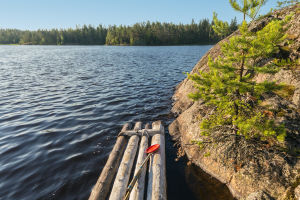A sea-crossing bridge, also known as a transoceanic or offshore bridge, is a magnificent structure that connects two geographic locations separated by an ocean or bay.
Such bridges are a testament to human engineering prowess and serve as vital transportation links.
The construction of these marvels involves overcoming numerous engineering and technical challenges, as the design must account for complex factors such as the marine environment, submarine geology, waves, wind, and tides.
The advantages of building sea-crossing bridges are multifaceted and significant:
1. Convenient Transportation: By significantly reducing the travel distance between two distant locations, sea-crossing bridges enhance traffic efficiency and facilitate smooth and expedient travel for vehicles, trains, and pedestrians alike. This improved accessibility brings communities closer together.
2. Tourism and Economic Development: These bridges can act as catalysts for regional tourism and economic growth. By fostering better connectivity between regions, they attract more investments and generate employment opportunities, bolstering the overall economy.
Numerous cities around the world have embraced the concept of sea-crossing bridges to maximize their potential for development and connectivity.
Notable examples include Hong Kong, Shanghai, and Fuzhou, which have constructed such bridges to connect mainland areas with outlying islands, facilitating social and economic exchanges on both sides.
Nonetheless, the construction of sea-crossing bridges presents its own set of challenges:
1. Cost and Investment: Building bridges across vast bodies of water is a complex and costly undertaking, demanding substantial capital investment from governments and stakeholders.
2. Environmental Impact: The construction of sea-crossing bridges may have some adverse effects on the marine ecological environment. To mitigate these impacts, rigorous environmental assessments and protective measures are essential.
3. Natural Disasters: As sea-crossing bridges are exposed to the elements, they are vulnerable to natural disasters like hurricanes and tsunamis. Ensuring their structural integrity and disaster resilience is paramount for safety and longevity.
In light of these challenges, thorough planning and implementation are vital to ensure the safety, sustainability, and environmental friendliness of sea-crossing bridges. By adopting innovative engineering techniques and eco-friendly designs, we can maximize the benefits while minimizing the drawbacks.
The world boasts several iconic and renowned sea-crossing bridges that have become symbols of engineering achievement and architectural beauty. Some of the most notable ones include:
1. Hong Kong-Zhuhai-Macau Bridge: Connecting Hong Kong, Zhuhai, and Macau, this remarkable bridge is the world's longest sea-crossing bridge. Its completion in 2018 has significantly improved regional connectivity.
2. Tokyo Bay Breakwater Bridge: Spanning Tokyo Bay in Japan and connecting Tokyo with Chiba, this suspension bridge holds the distinction of being the world's longest of its kind, measuring approximately 15.1 kilometers.
3. Golden Gate Bridge: An iconic structure in San Francisco, California, USA, this suspension bridge was opened to traffic in 1937, spanning San Francisco Bay and linking the city to the Golden Gate National Park.
4. English Channel Tunnel: While not a traditional bridge, this underwater railway and vehicle tunnel linking the United Kingdom and France beneath the English Channel is one of the most renowned transoceanic projects in the world.
5. Oresund Bridge: Connecting Sweden and Denmark, this road-rail bridge, completed in 2000, links Malmö in Sweden to Copenhagen in Denmark, promoting greater integration between the two nations.
These sea-crossing bridges serve as iconic landmarks of their respective countries and exemplify humanity's unyielding determination to overcome geographical barriers.
They not only represent engineering prowess but also act as vital arteries of development, bolstering regional connectivity, fostering economic growth, and enhancing the quality of life for millions of people.
As technology continues to evolve, we can expect even more impressive feats of engineering, and the list of famous sea-crossing bridges is bound to grow with time.
These awe-inspiring structures shall continue to captivate our imaginations and serve as testaments to human ingenuity and innovation, ensuring a brighter and better-connected future for generations to come.


